|

On eBay Now...
13 Star Golden Ladybird Beetle Synonycha grandis Clear Education Insect Specimen For Sale
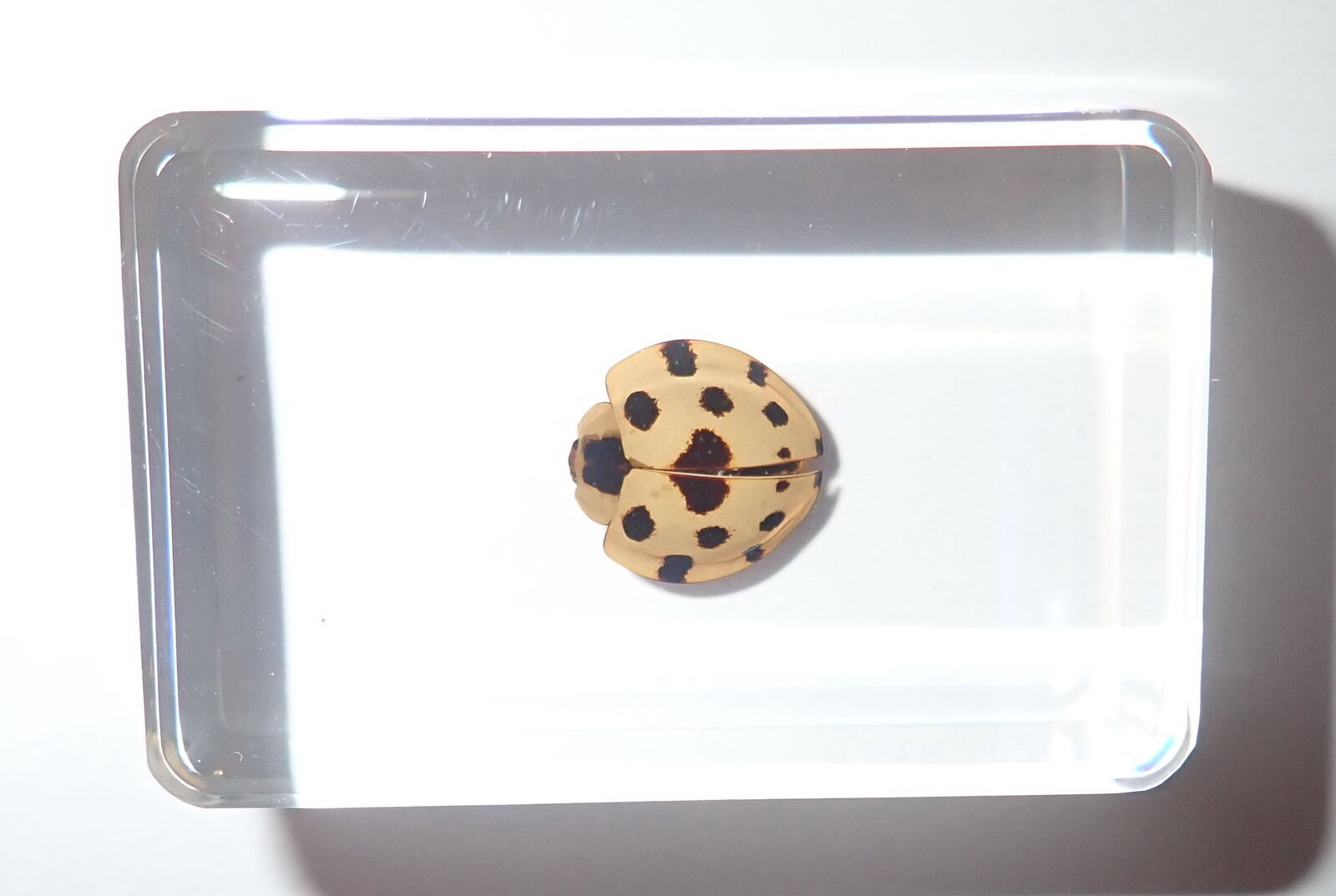
When you click on links to various merchants on this site and make a purchase, this can result in this site earning a commission. Affiliate programs and affiliations include, but are not limited to, the eBay Partner Network.

13 Star Golden Ladybird Beetle Synonycha grandis Clear Education Insect Specimen:
$13.00
Real13 Star Golden Ladybird Beetle - Synonycha grandisspecimen encased inclear lucite material. Safe, authentic and completely unbreakableproduct put real Beetle right at your fingertips!Anyone can safely explore thebeetle from every angle. It is clear enough for microscope observation.Length of thebeetle's body is1 cm (0.4 inch).Size of thelucite block is 4.5x3.0x2.5 cm (1.8x1.2x1.0 inch). Weight of the block is 30 g and 45 g with packing box. The Nature Garden 13 Star Golden Ladybird Beetle Synonycha grandis Clear Education Insect Specimen
Real13 Star Golden Ladybird Beetle - Synonycha grandisspecimen encased inclear lucite material. Safe, authentic and completely unbreakableproduct put real Beetle right at your fingertips! Anyone can safely explore thebeetle from every angle. It is clear enough for microscope observation. Length of thebeetle's body is1 cm (0.4 inch). Size of thelucite block is 4.5x3.0x2.5 cm (1.8x1.2x1.0 inch). Weight of the block is 30 g and 45 g with packing box. This is a handmade real animal specimen craft. Each one will be a bit different (specimen size, color and posture) even in the same production batch.
The pictures in the listing are just for reference as we are selling multiple pieces with same pictures. It is an ideal learning aid for students and kids and also a very good collectible item for every body. *** 13 Star Golden Ladybird Beetle - Synonycha grandis Order ColeopteraLinnaeus, 1758 -- beetles, besouro, coléoptères Suborder PolyphagaEmery, 1886 Infraorder CucujiformiaLameere, 1938 Superfamily CucujoideaLatreille, 1802 Family CoccinellidaeLatreille, 1807 -- coccinelles, ladybird beetles Subfamily CoccinellinaeLatreille, 1807 Genus SynonychaChevrolat in Dejean, 1837 Species Synonycha grandis(Thunberg, 1781) Coccinellidae is a family of beetles, known variously as ladybirds (British English, Australian English, South African English), ladybugs (North American English) or lady beetles (preferred by some scientists). The family name comes from its type genus, Coccinella. Coccinellids are found worldwide, with over 5,000 species described, more than 450 native to North America alone. Coccinellids are small insects, ranging from 1 mm to 10 mm (0.04 to 0.4 inches), and are commonly yellow, orange, or scarlet with small black spots on their wing covers, with black legs, head and antennae. A very large number of species are mostly or entirely black, gray, or brown, however, and may be difficult for non-entomologists to recognize as coccinellids (and, conversely, there are many small beetles that are easily mistaken as such, like tortoise beetles). They are generally considered useful insects as many species feed on aphids or scale insects, which are pests in gardens, agricultural fields, orchards, and similar places. Some people consider seeing them or having them land on one's body to be a sign of good luck to come, and that killing them presages bad luck. A few species are pests in North America and are typically predators on Hemiptera such as aphids and scale insects, though members of the subfamily Epilachninae are herbivores, and can be very destructive agricultural pests (e.g., the Mexican bean beetle). They are also known to eat certain plants and crops when no other food is present, making them a possible pest to farmers and gardeners. While they are often used as biological control agents, introduced species of ladybirds (such as Harmonia axyridis or Coccinella septempunctata in North America) can outcompete and displace native coccinellids, and become pests in their own right. Coccinellids are often brightly coloured to ward away potential predators. This defense works because most predators associate bright colours (especially orange and black or yellow and black) with poison and other unpleasant properties. This phenomenon is called aposematism. In fact, most coccinellids are indeed poisonous to smaller predators, such as lizards and small birds; however, a human would have to eat several hundred coccinellids before feeling any effects. Adult coccinellids are able to reflex-bleed hemolymph from their leg joints, releasing their oily yellow toxin with a strong repellent smell. This becomes quite obvious when one handles a coccinellid roughly. Most Coccinellids mate in Spring or Summer and the female lays a cluster of eggs (numbering from a few to a few hundred, depending on species) as near as possible to an aphid colony. In most species these eggs hatch into a larval state within a week. This state lasts 10–15 days, and they then go into a pupal stage before becoming an adult coccinellid. The entire life cycle of the Coccinellid is only 4–7 weeks. Most ladybird species are univoltine, producing only one generation a year, although some are bivoltine. Coccinellids lay extra infertile eggs with the fertile eggs. These appear to provide a backup food source for the larvae when they hatch. The ratio of infertile to fertile eggs increases with scarcity of food at the time of egg laying. Some species are migratory and form large aggregations during the migratory period. They also form large aggregations when they go into hibernation in Winter. Habitats Most coccinellids are beneficial to gardeners in general. In the Spring, one could usually find a ladybird in a vegetable garden feeding on aphids. As in many insects, ladybirds in temperate regions enter diapause during the Winter. Some species (e.g., Hippodamia convergens) gather into groups and move to higher land, such as a mountain, to enter diapause. Ladybirds are usually found where aphids or scale insects are, and they lay their eggs near their prey, to increase the likelihood the larvae will find the prey easily. Since aphids and scale insects occur nearly everywhere in the world, ladybirds are also cosmopolitan. Coccinellids as household pests Although native species of coccinellids are typically considered benign, in North America the Asian lady beetle (Harmonia axyridis), introduced in the twentieth century to control aphids on agricultural crops, has become a serious household pest in some regions owing to its habit of overwintering in structures. It is similarly acquiring a pest reputation in Europe, where it is called the "Harlequin Ladybird" (see main article "Asian lady beetle" for discussion). Coccinellids in popular culture Coccinellids are and have for very many years been favourite insects of children. The insects had many regional names (now mostly disused) such as the lady-cow, may-bug, golden-knop, golden-bugs (Suffolk); and variations on Bishop-Barnaby (Norfolk dialect) - (Barney, Burney) Barnabee, Burnabee, and the Bishop-that-burneth. In parts of Northern Europe, tradition says that one's wish granted if a ladybird lands on oneself. In Italy, it is said by some that if a ladybird flies into one's bedroom, it is considered good luck. In central Europe, a ladybird crawling across a girl's hand is thought to mean she will get married within the year. In some cultures they are referred to as lucky bugs. ***
Item SpecificsInsect Breed :BeetleCountry of Manufacture :ChinaCountry/Region of Manufacture :ChinaMaterial :ResinType :Collector PlateUPC :Does not applyModified Item :NoHandmade :Yes
Payment By Paypal Shipping Free shipping cost. We send the goods to USA, Canada, UK, Australia, New Zealand, EU countries and some other European and Asian countries by E-express, a kind of fast postal service by Hong Kong Post. It usually takes about 6 to 10 working days for delivery. We send the goods to other countries by registered airmail and will take about 8 to 14 working days for delivery. Returns Returns: We accept returns with any reason in 30 days. Contact Us We will answer buyer messages within 24 hours during working days. The Nature Garden From all around the world DESCRIPTIONPAYMENTSHIPPINGRETURN POLICYCONTACT US 13 Star Golden Ladybird Beetle Synonycha grandis Clear Education Insect Specimen
Real13 Star Golden Ladybird Beetle - Synonycha grandisspecimen encased inclear lucite material. Safe, authentic and completely unbreakableproduct put real Beetle right at your fingertips! Anyone can safely explore thebeetle from every angle. It is clear enough for microscope observation. Length of thebeetle's body is1 cm (0.4 inch). Size of thelucite block is 4.5x3.0x2.5 cm (1.8x1.2x1.0 inch). Weight of the block is 30 g and 45 g with packing box. This is a handmade real animal specimen craft. Each one will be a bit different (specimen size, color and posture) even in the same production batch.
The pictures in the listing are just for reference as we are selling multiple pieces with same pictures. It is an ideal learning aid for students and kids and also a very good collectible item for every body. *** 13 Star Golden Ladybird Beetle - Synonycha grandis Order ColeopteraLinnaeus, 1758 -- beetles, besouro, coléoptères Suborder PolyphagaEmery, 1886 Infraorder CucujiformiaLameere, 1938 Superfamily CucujoideaLatreille, 1802 Family CoccinellidaeLatreille, 1807 -- coccinelles, ladybird beetles Subfamily CoccinellinaeLatreille, 1807 Genus SynonychaChevrolat in Dejean, 1837 Species Synonycha grandis(Thunberg, 1781) Coccinellidae is a family of beetles, known variously as ladybirds (British English, Australian English, South African English), ladybugs (North American English) or lady beetles (preferred by some scientists). The family name comes from its type genus, Coccinella. Coccinellids are found worldwide, with over 5,000 species described, more than 450 native to North America alone. Coccinellids are small insects, ranging from 1 mm to 10 mm (0.04 to 0.4 inches), and are commonly yellow, orange, or scarlet with small black spots on their wing covers, with black legs, head and antennae. A very large number of species are mostly or entirely black, gray, or brown, however, and may be difficult for non-entomologists to recognize as coccinellids (and, conversely, there are many small beetles that are easily mistaken as such, like tortoise beetles). They are generally considered useful insects as many species feed on aphids or scale insects, which are pests in gardens, agricultural fields, orchards, and similar places. Some people consider seeing them or having them land on one's body to be a sign of good luck to come, and that killing them presages bad luck. A few species are pests in North America and are typically predators on Hemiptera such as aphids and scale insects, though members of the subfamily Epilachninae are herbivores, and can be very destructive agricultural pests (e.g., the Mexican bean beetle). They are also known to eat certain plants and crops when no other food is present, making them a possible pest to farmers and gardeners. While they are often used as biological control agents, introduced species of ladybirds (such as Harmonia axyridis or Coccinella septempunctata in North America) can outcompete and displace native coccinellids, and become pests in their own right. Coccinellids are often brightly coloured to ward away potential predators. This defense works because most predators associate bright colours (especially orange and black or yellow and black) with poison and other unpleasant properties. This phenomenon is called aposematism. In fact, most coccinellids are indeed poisonous to smaller predators, such as lizards and small birds; however, a human would have to eat several hundred coccinellids before feeling any effects. Adult coccinellids are able to reflex-bleed hemolymph from their leg joints, releasing their oily yellow toxin with a strong repellent smell. This becomes quite obvious when one handles a coccinellid roughly. Most Coccinellids mate in Spring or Summer and the female lays a cluster of eggs (numbering from a few to a few hundred, depending on species) as near as possible to an aphid colony. In most species these eggs hatch into a larval state within a week. This state lasts 10–15 days, and they then go into a pupal stage before becoming an adult coccinellid. The entire life cycle of the Coccinellid is only 4–7 weeks. Most ladybird species are univoltine, producing only one generation a year, although some are bivoltine. Coccinellids lay extra infertile eggs with the fertile eggs. These appear to provide a backup food source for the larvae when they hatch. The ratio of infertile to fertile eggs increases with scarcity of food at the time of egg laying. Some species are migratory and form large aggregations during the migratory period. They also form large aggregations when they go into hibernation in Winter. Habitats Most coccinellids are beneficial to gardeners in general. In the Spring, one could usually find a ladybird in a vegetable garden feeding on aphids. As in many insects, ladybirds in temperate regions enter diapause during the Winter. Some species (e.g., Hippodamia convergens) gather into groups and move to higher land, such as a mountain, to enter diapause. Ladybirds are usually found where aphids or scale insects are, and they lay their eggs near their prey, to increase the likelihood the larvae will find the prey easily. Since aphids and scale insects occur nearly everywhere in the world, ladybirds are also cosmopolitan. Coccinellids as household pests Although native species of coccinellids are typically considered benign, in North America the Asian lady beetle (Harmonia axyridis), introduced in the twentieth century to control aphids on agricultural crops, has become a serious household pest in some regions owing to its habit of overwintering in structures. It is similarly acquiring a pest reputation in Europe, where it is called the "Harlequin Ladybird" (see main article "Asian lady beetle" for discussion). Coccinellids in popular culture Coccinellids are and have for very many years been favourite insects of children. The insects had many regional names (now mostly disused) such as the lady-cow, may-bug, golden-knop, golden-bugs (Suffolk); and variations on Bishop-Barnaby (Norfolk dialect) - (Barney, Burney) Barnabee, Burnabee, and the Bishop-that-burneth. In parts of Northern Europe, tradition says that one's wish granted if a ladybird lands on oneself. In Italy, it is said by some that if a ladybird flies into one's bedroom, it is considered good luck. In central Europe, a ladybird crawling across a girl's hand is thought to mean she will get married within the year. In some cultures they are referred to as lucky bugs. *** Item SpecificsInsect Breed :BeetleCountry of Manufacture :ChinaCountry/Region of Manufacture :ChinaMaterial :ResinType :Collector PlateModified Item :NoHandmade :Yes
Payment By Paypal Shipping Free shipping cost. We send the goods to USA, Canada, UK, Australia, New Zealand, EU countries and some other European and Asian countries by E-express, a kind of fast postal service by Hong Kong Post. It usually takes about 6 to 10 working days for delivery. We send the goods to other countries by registered airmail and will take about 8 to 14 working days for delivery. Returns Returns: We accept returns with any reason in 30 days. Contact Us We will answer buyer messages within 24 hours during working days.
All right reserved.
Shop CategoryStore Home animals Tektite◈Loose lots◈Single stone◈Silver wired pendant◈Tiktite hanger Lapis Lazuli▷Polished stones♢Loose lots♢Single stones▷Rough stones♢Loose lots♢Single stone◈Craft items Turquoise◈Natural turquoise◈Turquoise substitutes Stone carving Rough Stone & mineral◈Single piece◈Loose lots Polished Stone & mineral◈Single piece◈Loose lots Rough ruby & sapphire◈Ruby◈Sapphire Star Ruby & Sapphire◈Star Ruby - Opaque◈Star Ruby - Transparent◈Blue Star Sapphire◈Star Sapphire - other colors Animal specimen items◈Life cycle◈Collection set◈Key ring◈Bracelet or bangle◈Necklace or ball◈Laminated specimen◈Computer Opener◈Dome animal♢Bug♢Bee, wasp, hornet♢Other insects♢Other animal▷Butterfly♢Butterfly paperweight♢Laminated butterfly Plant Cycle◈Collection Set◈Laminated items◈Seed or root Stone, mineral, fossil box set Jewelry crafts Paper cuts◈Small set◈Large set◈Single piece OtherHot Item 7 Seven Bee Wasp & Hornet Collection Set include Murder Hornet Insect Specimen USD 33.00 10 Mohs Scale Stone Set clear plastic box Learning Real Specimen Kit USD 16.00 Black Indochinite Tektite Stone 10 pieces Plastic Box Set Natural Specimen Kit USD 15.00 Fine Ground Cinnabar Crystal Tiny pieces 40 gram Lot USD 18.00 Chinese Water Snake Skeleton in 110x45x18 mm Block Education Animal Specimen USD 20.00 PictureNew List Item Turquoise Substitute Dyed Howlite rough Stone 75.2 gram pieces 52x42x36 mm USD 9.99 Fossil Mini Trilobite Arthricocephalus granulus 10x8 mm 23.2 g plastic box USD 14.99 Fossil Mini Trilobite Arthricocephalus granulus 16x11 mm 17.2 g plastic box USD 14.99 Fossil Mini Trilobite Arthricocephalus granulus 6x4 mm 20.7 g plastic box USD 14.99 Golden Scorpion Specimen 47 mm Dome Paperweight on Purple sand USD 7.99 Custom Item
Powered by SoldEazy

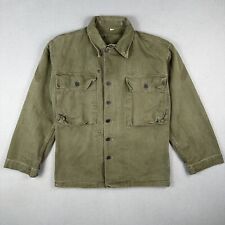
WW2 US Army HBT Jacket Shirt 13 Star 2nd Pattern Pleated Pockets 34r Private $150.00

WW2 US Army HBT Jacket Shirt 13 Star 2nd Pattern Pleated Pockets 36r Private $150.00
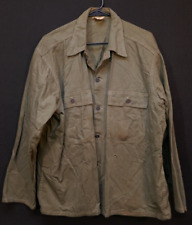
Korean War US Army 13 Star Button Duck Cotton Combat Field Shirt Early-War Issue $126.75
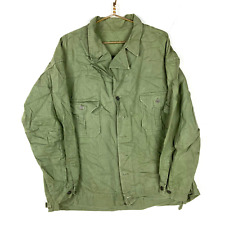
Vintage Us Military 13 Star Fatigue Shirt Jacket Size 2XL Green 40s 50s $229.99

STAR WARS #13 Marvel Comics 2015 NM- - Vault 35 $2.57
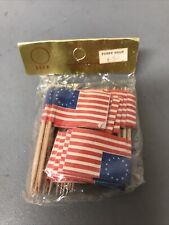
Vintage 13 Star AMERICAN FLAG Toothpicks 1”x1 1/2” ~FREE SHIPPING USA 🇺🇸 $8.90
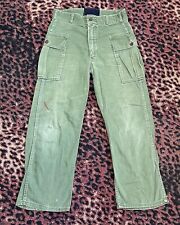
Vintage 40s 50s WWII ARMY P44 HBT Herringbone 13 Star Buttons Cargo Pants 28x25 $200.00
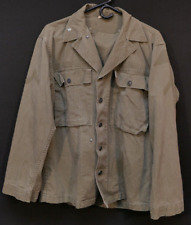
WWII - Korean War US Army Field Combat Shirt HBT Herringbone Twill 13 Star 36R $162.50
|